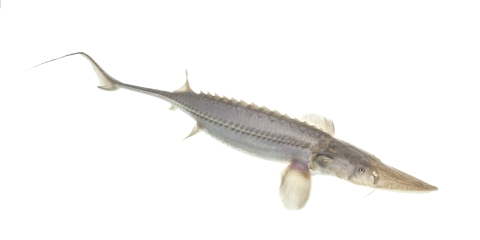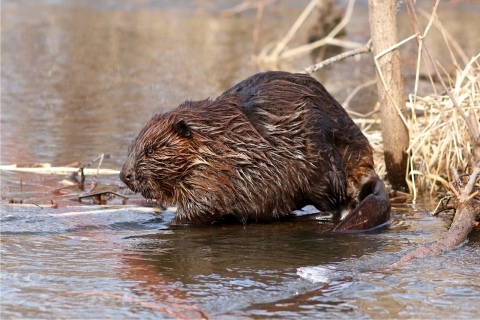Seasons of Wildlife
The refuge available for game hunting throughout most hunting seasons, thus most game animals such as deer and turkey are extremely elusive. Still often seen but only for a fleeting moment. The best time to view game species is in the spring, when most hunting seasons are closed and wildlife are active raising and caring for young.
Spring also provides the best viewing of the non-game wildlife that also call the refuge home. Migrating songbirds flock to the floodplain forests and wet-prairies. The refuge becomes filled with their songs and nesting activity. Look for the brilliant blue indigo bunting and vibrant yellow prothonotary warbler. Both numerous on the refuge.
Fall flooding on the Missouri river provides a spectacular wildlife event on the refuge. Waterfowl flock by the thousands to the flooded wet-prairies of the refuge. Unfortunately, this event does not occur each fall and controlled only by the weather and release of floodwaters on the Missouri river.
Wildlife on the refuge are here for you to enjoy. For safe and successful visit, pay close attention to the season and plan accordingly. Whether you visit Big Muddy National Fish and Wildlife Refuge for quality hunting and fishing or excellent birding and photography, there is always a reason to enjoy the season on the Big Muddy.
Featured Species
The refuge provides habitat for a variety of wildlife. Most wildlife found throughout the state of Missouri reside on the refuge. Many small furbearers exist on the refuge including raccoon, possum and the elusive bobcat. The refuge supports a good population of white-tailed deer and eastern wild turkey, the two big game species most sought after by hunters in Missouri. Turkey numbers and distribution vary widely between years due to spring weather conditions and flooding on the refuge.
As the bottomland forest returns to the Missouri River floodplain, so does the beaver. Nature’s amazing engineers are actively creating a wide variety of habitats for other wildlife on the refuge. The refuge is also home to American redstarts, these secretive warblers are found in second growth forests on bottomlands and moist hillsides associated with tributary drainages of the Missouri River.
The Missouri river drives the floodplain and aquatic habitat of the lesser known but equally important wildlife that inhabit the refuge. The endangered pallid sturgeon swims in her waters and the refuge plays a vital role in providing shallow water habitat for survival of sturgeon young.



